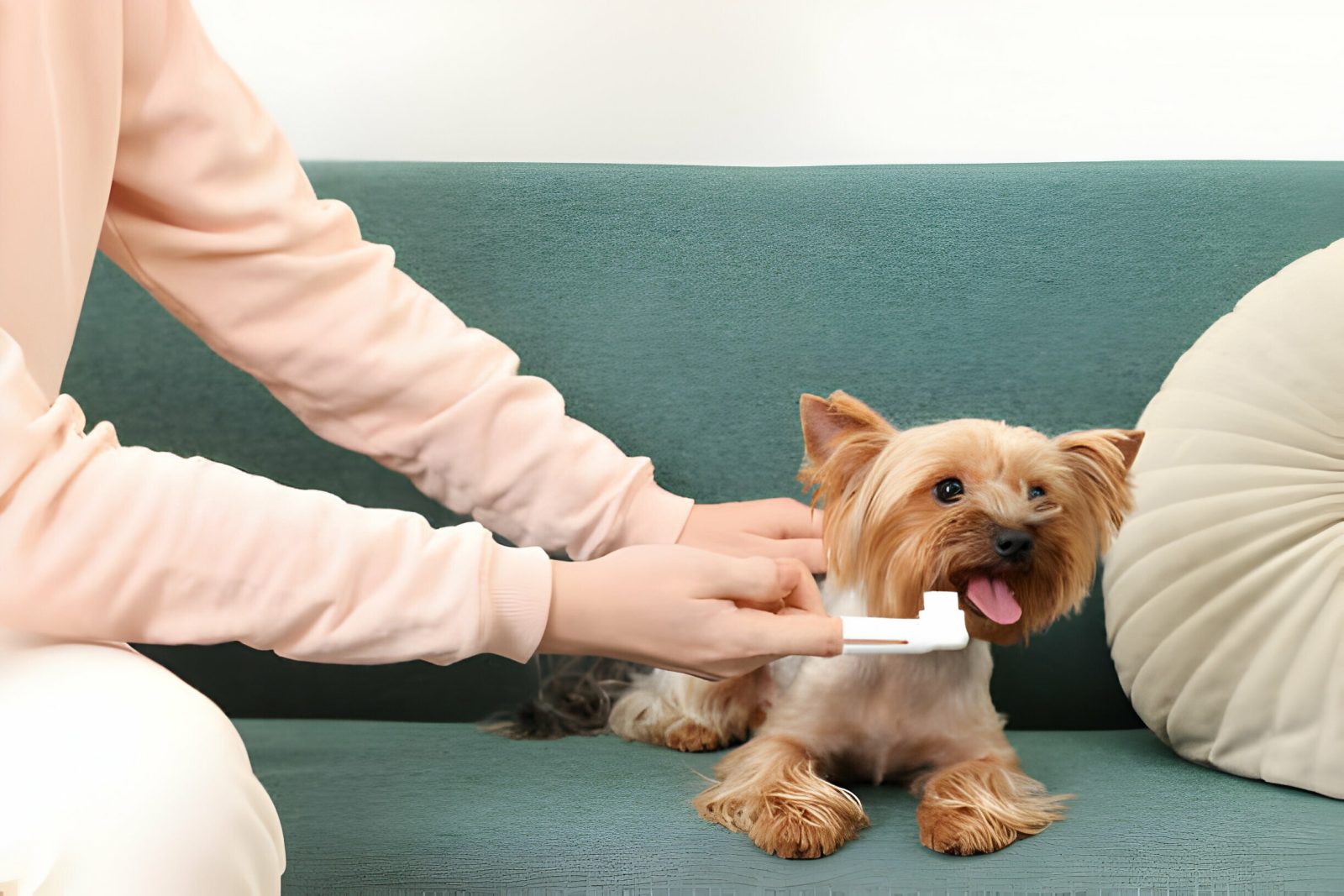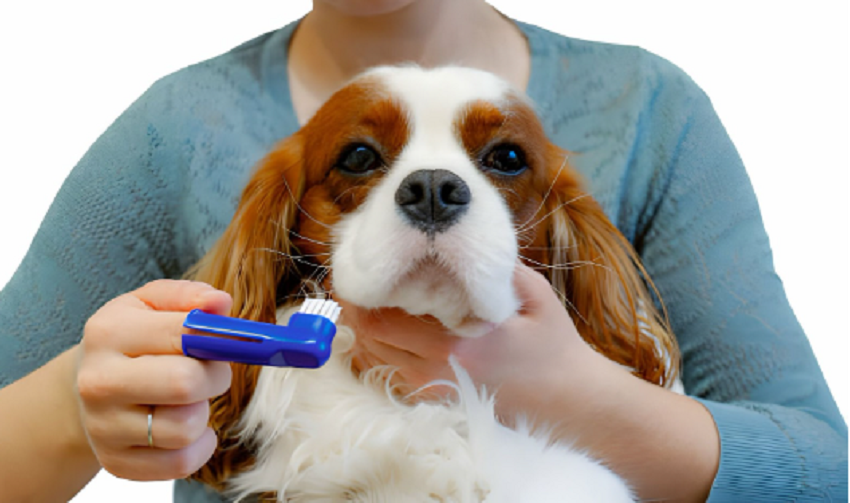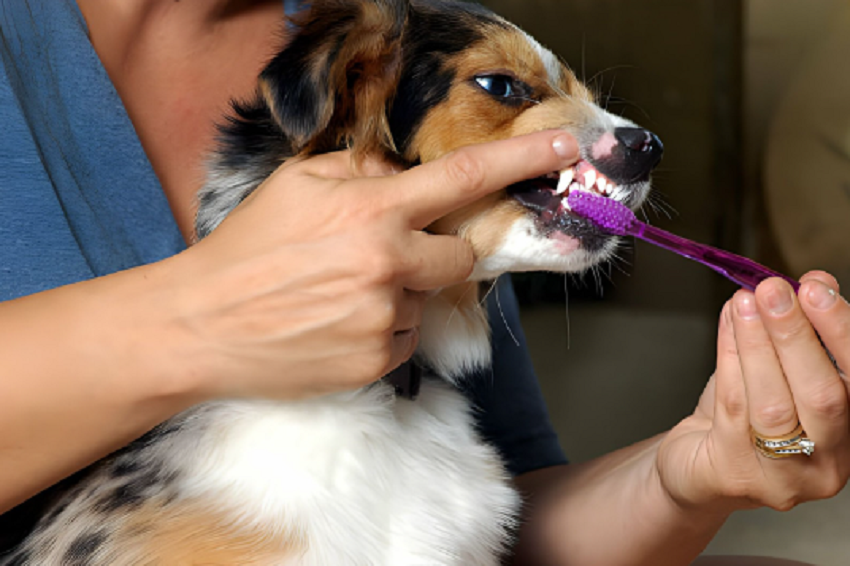

Taking care of your dog’s dental hygiene is crucial for their overall health and well-being. Just like humans, dogs can suffer from dental problems such as plaque buildup, tartar accumulation, gum disease, and tooth decay. Neglecting your dog’s oral health can lead to painful infections, tooth loss, and even systemic health issues. That’s why regular dental care, including brushing your dog’s teeth, is essential. Proper dental hygiene not only prevents dental issues but also improves your dog’s breath, reduces the risk of heart disease, and extends their lifespan. By investing in a dog tooth brushing kit, you can ensure that your furry friend’s teeth and gums stay clean and healthy.

Brushing your dog’s teeth may seem like a daunting task, but with the right tools, it can become a simple and enjoyable routine for both you and your pet. That’s where a dog toothbrushing kit comes in. This all-in-one solution provides you with everything you need to maintain your dog’s dental hygiene effectively.
A dog toothbrushing kit typically includes a toothbrush with an ergonomic handle for a comfortable grip. The soft bristles are designed to clean your dog’s teeth thoroughly without causing any discomfort.
Additionally, most kits come with a specially formulated toothpaste that is safe for dogs to swallow. These toothpaste are often flavored with ingredients that appeal to dogs, making the brushing experience more enjoyable for them.
Using a dog tooth brushing kit not only ensures that your dog’s teeth are properly cleaned but also saves you time and money by preventing expensive dental procedures in the future. It’s a small investment that can have a big impact on your dog’s oral health.

A dog tooth brushing kit typically consists of several components that work together to provide effective dental care. Let’s take a closer look at each of these components:
The toothbrush included in a dog tooth-brushing kit is specifically designed for canine use. It has an ergonomic handle that fits comfortably in your hand, allowing for better control during brushing. The bristles are soft yet effective in removing plaque and tartar from your dog’s teeth.
Dog toothpastes are formulated with safe and natural ingredients, free from harmful chemicals. They come in a variety of flavors like chicken, beef, or mint, which dogs find appealing. The toothpaste not only freshens your dog’s breath but also helps to fight bacteria and prevent dental problems.
Some dog toothbrushing kits include a fingerbrush as an alternative to a regular toothbrush. This flexible brush fits over your finger, giving you better control and allowing for more precise cleaning.
To keep all the components organized and easily accessible, most dog tooth brushing kits come with a storage case. This case is specially designed to hold the toothbrush, toothpaste, and fingerbrush, ensuring that you have everything you need in one place.
With these components, a dog tooth brushing kit provides the necessary tools to maintain your dog’s dental hygiene effectively and conveniently.

When it comes to choosing the right dog tooth-brushing kit, there are a few factors to consider. Here’s a step-by-step guide to help you make an informed decision:
Consider the size and breed of your dog. Smaller dogs may require a smaller toothbrush and finger brush, while larger dogs may need a larger size. Look for a kit that offers different sizes or adjustable options to ensure a proper fit.
Opt for a toothbrush with soft bristles to avoid causing any discomfort or damage to your dog’s gums. Soft bristles are effective in removing plaque and tartar while being gentle on your dog’s teeth.
Check the ingredients used in the toothpaste. Look for natural ingredients that are safe for dogs and free from chemicals that could be harmful if swallowed. Flavours that appeal to your dog can also make the brushing experience more enjoyable.
Read customer reviews and ratings of different dog tooth-brushing kits. Look for kits with positive feedback regarding effectiveness, ease of use, and durability. Real-life experiences can give you valuable insights into the quality of the kit.
By considering these factors, you can choose a dog tooth brushing kit that suits your dog’s needs and ensures effective dental care.

Brushing your dog’s teeth may seem challenging at first, but with patience and practice, it can become a stress-free routine. Follow these simple steps for successful tooth brushing:
Gradually introduce your dog to the toothbrush by allowing them to sniff and lick it. This will help them become familiar with the brush and its texture.
Find a quiet and comfortable spot where you and your dog can relax during brushing. Make sure your dog is calm and relaxed before starting the brushing session.
Squeeze a small amount of toothpaste onto the bristles of the toothbrush. Let your dog lick the toothpaste to get them accustomed to the taste.
Gently lift your dog’s lip to expose their teeth and gums. Brush in small circular motions, focusing on the outer surfaces of the teeth. Take your time and be gentle to avoid causing any discomfort. Reward and Praise: Throughout the brushing session, offer praise and rewards to your dog. Positive reinforcement will make the experience more enjoyable for them.
Start with short brushing sessions and gradually increase the duration as your dog becomes more comfortable. Aim for at least 2-3 minutes of brushing, 2-3 times a week. Finish with a Reward: After each successful brushing session, reward your dog with a treat or playtime. This will reinforce positive associations with tooth brushing. Remember, consistency is key. Regular brushing will help maintain your dog’s oral health and make future brushing sessions easier.

Here are some additional tips to ensure successful tooth-brushing sessions with your dog:
Introduce tooth brushing to your dog at a young age. This will help them get used to the process and make it a part of their routine.
Dogs may resist tooth brushing initially. Be patient, calm, and reassuring during the process. Avoid forcing the toothbrush into your dog’s mouth, as it can create negative associations.
Offer praise, rewards, and plenty of positive reinforcement during and after tooth brushing. This will motivate your dog and make the experience more enjoyable for them.
Turn tooth brushing into a bonding experience with your dog. Use a soothing and gentle tone of voice, and pet them before and after each session.
Stick to a regular tooth-brushing schedule. Consistency is key to maintaining your dog’s oral health and preventing dental problems.
Regularly check your dog’s teeth and gums for any signs of dental issues, such as bad breath, swollen gums, or tartar buildup. If you notice any abnormalities, consult your veterinarian.
By following these tips, you can ensure that your dog’s tooth brushing sessions are successful, stress-free, and beneficial for their dental health.
Brushing your dog’s teeth may not always be smooth sailing. Here are some common challenges you might face and ways to overcome them:
If your dog resists tooth brushing, start by simply touching their mouth and gradually progress to using a finger brush before introducing a toothbrush. Make the experience positive by offering rewards and praise.
Some dogs may have a sensitive gag reflex. If your dog gags during tooth brushing, try using a smaller toothbrush or a finger brush. Be gentle and avoid touching the back of their throat.
Dogs may feel anxious or fearful during tooth brushing. Create a calm and relaxing environment, use soothing tones, and be patient. Gradually build their confidence and associate tooth brushing with positive experiences.
If your dog refuses to open their mouth or cooperate, consult a professional dog trainer or a veterinarian. They can provide guidance and help you find alternative solutions.
Remember, every dog is unique, and it may take time to find the right approach that works for your furry friend. Stay patient, persistent, and adaptable to overcome any challenges you encounter.

While a dog tooth brushing kit is the most effective way to maintain your dog’s dental hygiene, there are a few alternative options available:
Dental chews are designed to promote oral health by reducing plaque and tartar buildup. They are available in various shapes and sizes, catering to different breeds and sizes of dogs. However, they should not be considered a complete replacement for tooth brushing.
Water additives can be added to your dog’s drinking water to help reduce plaque and freshen their breath. These additives contain enzymes or antimicrobial agents that work to break down plaque and prevent tartar formation. However, they are not as effective as tooth brushing.
Dental wipes can be used as a temporary solution for cleaning your dog’s teeth. These wipes are pre-moistened and come with textured surfaces to remove plaque. While they can be helpful in between brushing sessions, they are not as thorough as tooth brushing.
It’s important to note that these alternatives should be used in conjunction with regular tooth brushing for optimal dental health.
Maintaining your dog’s dental hygiene is crucial for their overall well-being. Investing in a dog tooth brushing kit is a wise choice that will benefit both you and your furry friend. With the right tools and techniques, you can ensure that your dog’s teeth stay clean, healthy, and free from dental problems.
Regular tooth brushing, supported by the proper use of a dog tooth brushing kit, is the most effective way to prevent plaque buildup, tartar accumulation, and gum disease. It’s a simple routine that can have a significant impact on your dog’s oral health and overall quality of life.
So, say goodbye to dental problems and hello to a healthier smile for your beloved canine companion. Invest in a dog tooth brushing kit today and make dental care a part of your dog’s daily routine. Your dog will thank you with fresh breath, strong teeth, and a wagging tail of gratitude.
Our website uses cookies to improve your experience. Learn more about: Cookie Policy
Leave a Reply